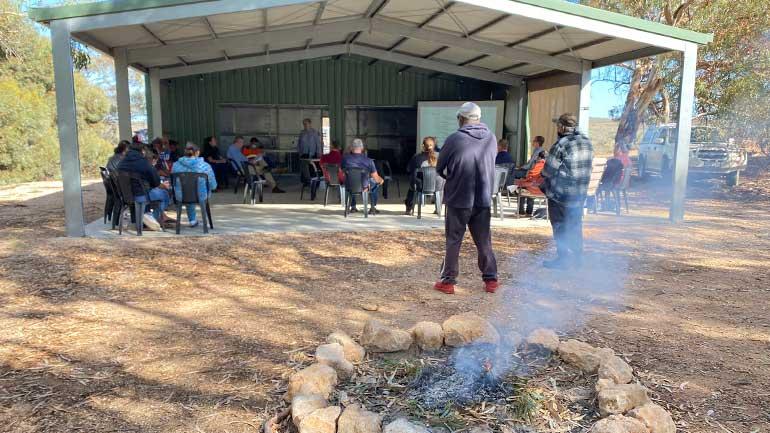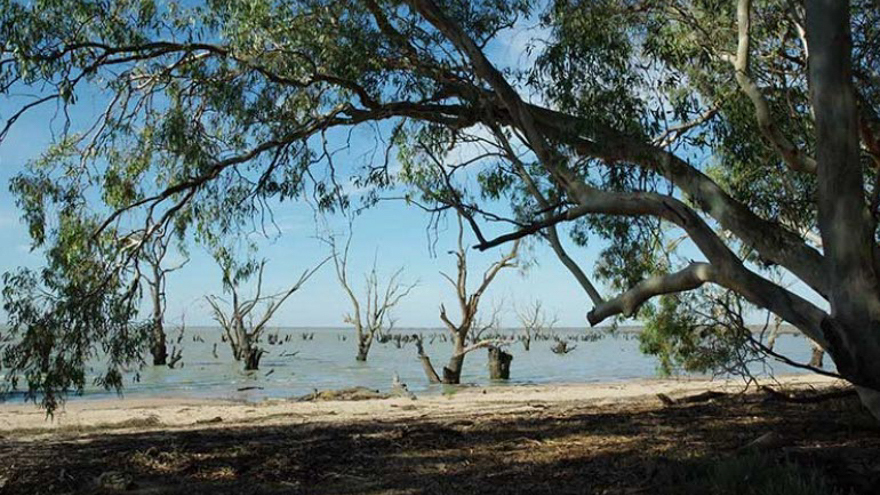Lake Victoria, or Tar-Ru, in far south-west New South Wales has a dual role – it is an immensely significant First Nations’ site and a key water storage on the Murray River which helps to provide water security for Adelaide.
Managing these dual roles over the past 25 years has been a major collaborative effort, marked this week by a meeting of many of the individuals involved from the Barkindji and Maraura Traditional Owners, the MDBA, 3 state governments, scientists, local landholders and other community members.

Lake Victoria–Tar-Ru has the highest known concentration of Aboriginal burials at any one site in Australia, highlighting the lake’s extraordinary significance to people through time, with evidence dating back at least 28,000 years.
More than 650 sites and 1100 cultural heritage items have been recorded at the lake, including burials, middens, hearths, scar trees, and stone and wooden artefacts.
The spotlight fell on Lake Victoria in 1994 when water levels were lowered for infrastructure maintenance, revealing many exposed burials and artefacts in need of urgent protection. After close consultation with Traditional Owners and archaeologists, extensive burial protection works commenced.
The then Murray–Darling Basin Commission arranged for a large survey of the area, and in 1996 the Lake Victoria Advisory Council was formed to bring together Traditional Owners, landholders, and government agencies to help better understand the complexities and legal requirements, including the consent to continue operating the lake as a water storage.
After several years of negotiation, the Cultural Landscape Plan of Management was agreed in 2002 to provide certainty and strike a balance between interest groups. The coordination of efforts at the lake was an immense task, and the Lake Victoria Advisory Council provided a means to share knowledge, values, and ideas and for different voices to input into decisions relating to the protection and management of the lake.
Over the following 2 decades, improvements continued through burial site protection, sand replenishment and stabilisation, revegetation to reduce erosion, pest management, fencing and destocking.
Central to success over 25 years has been the ongoing collaboration and attention to First Nations’ knowledge and practices, particularly through the Barkindji Maraura Elders Council which has guided the management of the area’s cultural heritage. With this knowledge has come improved land and water management, alongside scientific research and monitoring and reporting on physical works.
The longevity of the program is testament to the hard work, enthusiasm and commitment of the many people involved, who have paved the way for future protection of this nationally significant part of the Murray–Darling Basin.


